Microirrigation for Home Landscapes
What is microirrigation?
Microirrigation is a way to water plants using low pressure and low flowrates (usually 15 psi or less and 60 gph or less). Microirrigation systems can be easy to install above, on, or below the soil or mulch in landscape beds and are inexpensive to purchase. There are four types of microirrigation systems available.
Types of Microirrigation Systems
Drip Emitters
Drip emitters are used for plants that are spaced far apart, such as containerized plants or hanging baskets. Emitters can be installed directly into the main tubing line or attached to the "spaghetti" tubing that can be placed directly at the base of the plants. If plant spacing is not uniform, the latter method may work the best.
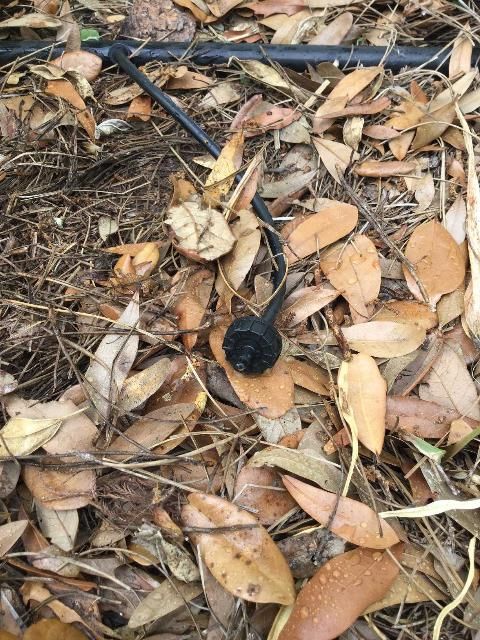
Credit: Anne Yasalonis, UF/IFAS
Bubblers
Bubblers are often used to establish and maintain large plants such as trees, but they can also be used in containers or on large shrubs. Bubblers can be installed directly into the main tubing line or on short stakes. Bubblers typically have the highest flowrate of all the microirrigation emitters.
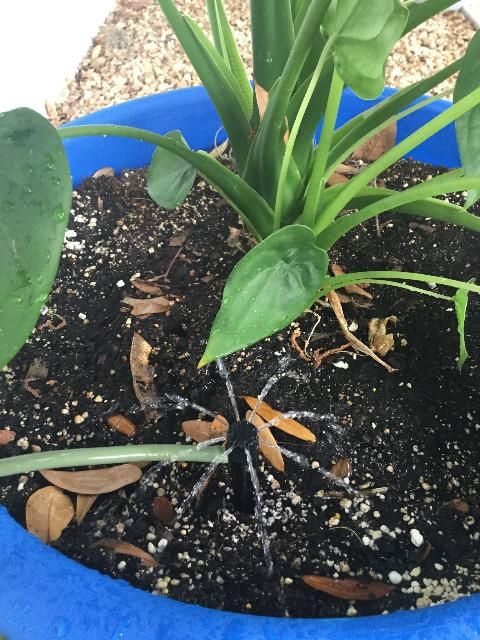
Credit: Anne Yasalonis, UF/IFAS
Drip Tubing
Drip tubing can be manufactured with in-line emitters or can be tubing with separate emitters attached. Drip tubing can be placed under the soil surface or mulch. This type of irrigation can be completely hidden. Drip tubing has evenly spaced holes in the in-line tubing line, so it is important that the holes are near the base of the plants being watered. Emitter spacing can be customized with tubing and separate emitters. One option is to match the plants' spacing with that of the in-line distribution holes. This type of system works well for annual bedding plants where layout matches the emitter holes on the irrigation line.
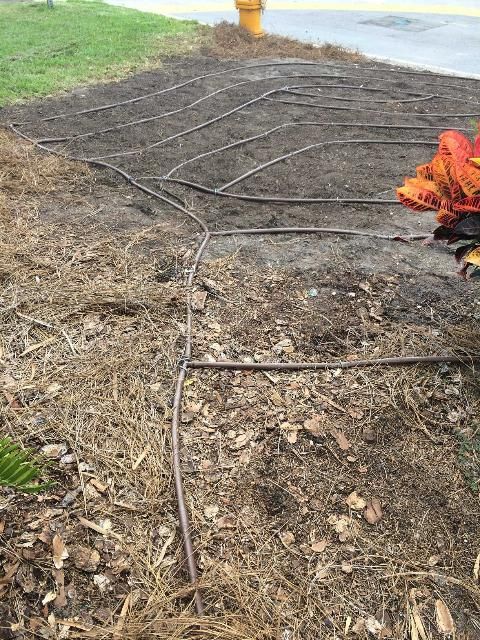
Credit: Anne Yasalonis, UF/IFAS
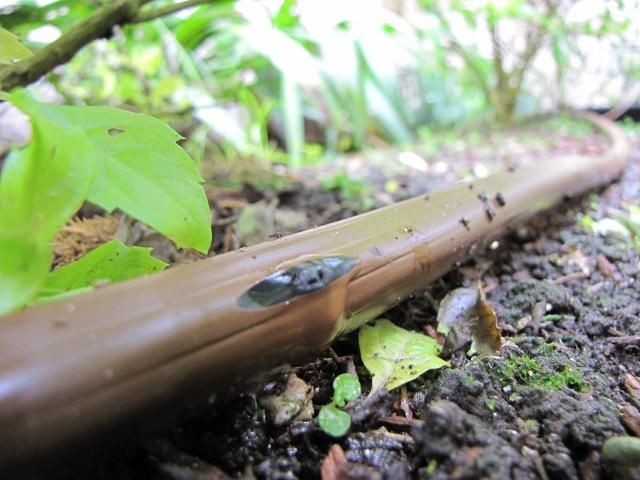
Credit: Michael Gutierrez, UF/IFAS
Microsprays
Microsprays (also microjets or microsprinklers) must be installed above the mulch. Compared to the other types of microirrigation, microsprays water the largest area. Many different spray patterns are available and can water up to 8 feet in diameter. Microsprays work well in mixed planting beds such as perennial gardens.
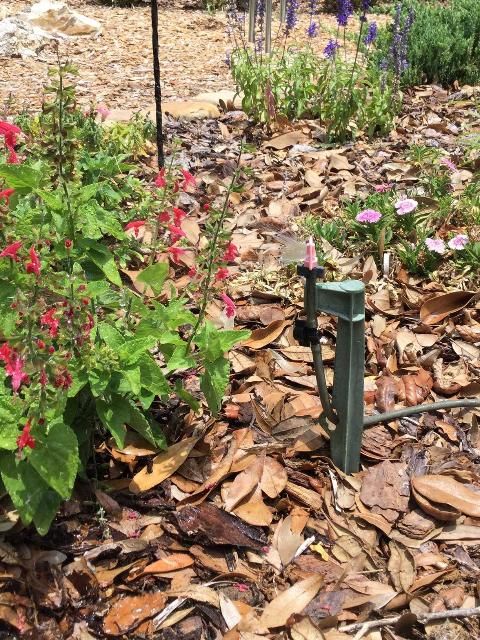
Credit: Anne Yasalonis, UF/IFAS
Why use microirrigation?
Microirrigation benefits include:
-
Reduced water use, financial savings, and conservation of water.
-
Reduction of disease if a drip or bubbler system is used and foliage is kept dry.
-
Reduction of weeds through focused distribution of water to the plants and not to open areas.
-
Low water pressure requirement, which makes microirrigation exempt from some watering restrictions.
-
Easy installation, ability to irrigate unusually shaped gardens, and relatively low cost.
Design and Installation
Microirrigation can be installed with a battery-operated timer on an outside hose bib or attached to an existing in-ground sprinkler system. If attached to an in-ground system, a new valve will be needed to accommodate the low pressure needs of the microirrigation components. Always remember to keep like sprinkler heads in the same zone and never mix with other types of sprinkler heads. Microirrigation emitters should not be mixed with rotors or pop-up spray heads.
Maintenance
Frequent inspection is key with any microirrigation system. This style of watering can make detection of leaks or other issues difficult. Look for wet/dry soil and decline in plant health. Turn on the system frequently and inspect it while it is operating. Remember to check timer batteries and irrigation run times to maintain efficiency.
The small plastic parts of a microirrigation system can be damaged by mowing and maintenance equipment, so take care when using machinery around these systems.
Microirrigation is an efficient way to water your vegetable gardens, containerized plants, hanging baskets, and garden beds. The systems are flexible and easy to expand and adapt to changing landscapes over time.
Where can I find more information?
Operation of Residential Irrigation Controllers: https://edis.ifas.ufl.edu/ae220
Home Irrigation and Landscape Combinations for Water Conservation in Florida: https://edis.ifas.ufl.edu/ae287
Estimated Water Savings Potential of Florida-Friendly Landscaping Activities: https://edis.ifas.ufl.edu/ae515


